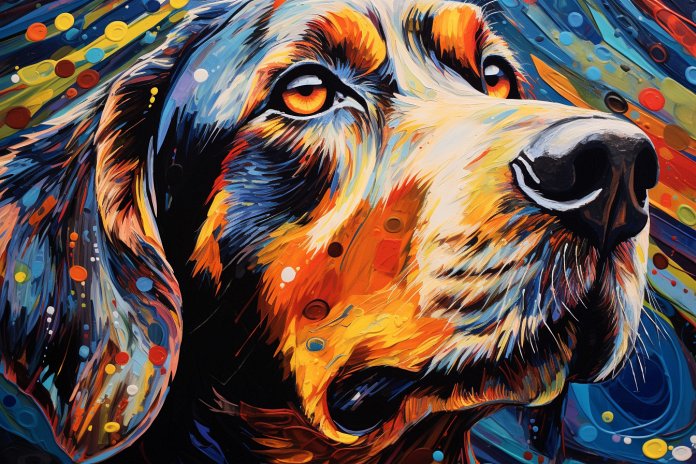
There are many myths and tales about dogs, such as one year of a dog’s life being equivalent to seven years of a human’s, dogs feeling guilt when they do something bad, grass being bad for dogs, and dogs being able to smell fear. While some of these may be myths, it turns out that dogs really can smell fear and react to it. This is important to keep in mind when interacting with dogs, whether they are your own or strangers’.
Signs Your Dog Can Smell Your Fear:
When humans feel fear, they show certain signs such as sweating, shaking, trying to make themselves smaller, or screaming. Dogs can pick up on these visual and behavioral cues and recognize when we are afraid. They can smell the increased activity and openness of our sweat glands, which produces a distinct body odor. Dogs that are searching for a specific smell will use their noses to get closer to the source. When dogs sense fear in their owners, they may try to cuddle up or protect them. They may also exhibit signs of discomfort, like putting their tail between their legs, whining, crying, or barking. Similarly, when encountering strangers who are afraid of them, dogs may interpret their behavior as aggressive and react accordingly.
Body Language:
Some body language that indicates a dog has detected fear includes being alert, barking, having hair on their back raised, whimpering, pushing their lips forward, putting their ears back, showing their teeth, having a stiff tail, or freezing in place. These signs can help us understand when a dog has smelled fear.
Other Signs:
Other signs that a dog has smelled fear include showing fear in return, being aggressive, giving slobbery kisses, having their nose up in the air, or acting uncomfortable.
The History and Science Behind Dogs Smelling Fear:
Dogs have evolved alongside humans for thousands of years, allowing them to read our body language, sense our emotions, and react accordingly. They have a much better sense of smell than humans, with up to 300 million receptor sites in their noses compared to our 6 million. Dogs can pick up on the smells produced when we experience fear, and studies have shown that they react differently when exposed to fear smells compared to happy or neutral smells. Dogs also take visual cues from us when determining how to react to a situation.
Training Your Dog to Smell Fear:
While you can’t train a dog to smell or react to fear specifically, you can help them become more comfortable in fearful situations. It is important to remain calm and composed when you are feeling fear, as your dog will pick up on your emotions. When it comes to interacting with strangers who may be afraid of your dog, it is important to train your dog to respect personal space and discourage negative behaviors such as jumping or excessive sniffing. Encouraging positive behaviors, like staying close to you when passing by strangers, can help create a more comfortable environment for everyone involved.
“Dogs may not speak our language, but they are highly attuned to our emotions. Their keen sense of smell and observation can pick up on our fear and react to it, thereby making them our empathetic, furry companions.”

Tips & Things to Know
1️⃣ Be aware of your body language and emotions around dogs. Dogs can pick up on signs of fear, such as sweating or trembling, and respond accordingly. If you’re feeling afraid and trying to interact with a dog, it might misinterpret your fear as aggression and react defensively.
2️⃣ Look out for signs that a dog has detected fear. This can include the dog being alert, barking, having raised hair on their back, pushing their lips forward, putting their ears back, showing their teeth, having a stiff tail, or freezing in place. These signs can help you understand if a dog is responding to fear sensed in its environment.
3️⃣ Train your dog to create a comfortable environment for everyone. Although you can’t train a dog to smell fear, you can train them to respect personal space and discourage negative behaviors like jumping or excessive sniffing. This is especially important when interacting with strangers who may be afraid of dogs. Encouraging positive behaviors, such as staying close to you when passing by strangers, can help to create a comfortable environment.
Frequently Asked Questions, Answered ✅
1. Can dogs really smell fear?
– Yes, dogs have a highly developed sense of smell and can pick up on the distinct body odor produced when humans experience fear.
2. How do dogs react when they smell fear in their owners?
– Dogs may try to cuddle up or protect their owners when they sense fear. They may also exhibit signs of discomfort, such as putting their tail between their legs, whining, crying, or barking.
3. What are some body language signs that indicate a dog has detected fear?
– Alertness, barking, raised hair on the back, whimpering, pushing their lips forward, ears back, showing teeth, stiff tail, or freezing in place are all signs that a dog has sensed fear.
4. How do dogs react when encountering strangers who are afraid of them?
– Dogs may interpret the fear as aggression and react accordingly. They may exhibit signs of discomfort or even aggression, depending on the situation.
5. Can you train a dog to smell fear or react to it?
– While you can’t train a dog to specifically smell or react to fear, you can help them become more comfortable in fearful situations. It is important to remain calm and composed when feeling fear, as dogs pick up on our emotions. Training them to respect personal space and encouraging positive behaviors can create a more comfortable environment for everyone involved.